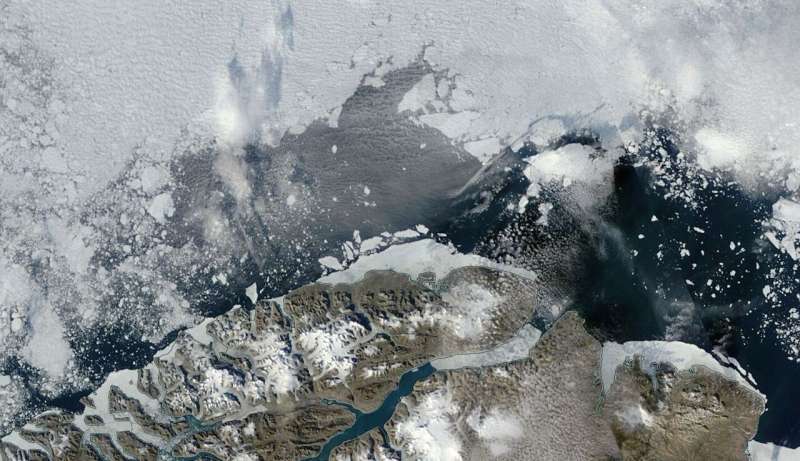Researchers find the dynamics behind the remarkable August 2018 Greenland polynya formation

A polynya is a region of open water that is surrounded by sea ice. These areas fluctuate throughout seasons, and weather events can influence their size and development. Extremely high wind in February 2018 led to a polynya that developed in the Wandel Sea off the coast of Greenland.
Climatologists have never observed such a pronounced polynya since the beginning of the satellite era. Then, six months later, in August 2018, a polynya appeared again. A team of scientists, wanting to learn more about this unusual event, applied a comprehensive dataset to investigate the effects of atmosphere, sea ice, and ocean on the August polynya formation.
"We found that the thinnest sea ice cover in August since 1978 and the modest southerly wind were responsible for the formation and maintenance of this polynya." said leading author Prof. Chang-Qing Ke. with Nanjing University."Sea ice drift patterns have become more responsive to atmospheric forcing due to thinning of sea ice cover with climate change."
Prof. Ke, alongside several other polynya researchers published their full results in Advances in Atmospheric Sciences. The study suggests that the regional wind has a profound influence on Arctic polynyas. Likewise, high wind played an essential role in the February polynya formation.
However, during the summer, thermodynamic effects are also critical to polynya formation. Understanding and predicting Arctic polynya formation requires more precise knowledge of both the dynamic (e.g., wind-induced sea ice drift) and thermodynamic (e.g., upwell heat) processes during polynya development.
This is a challenging task because Arctic regions are remote and lack plentiful surface observations. Scientists are mostly limited to applied satellite or model data. For further research, more in-situ satellite data is needed for detailed investigations into summer polynyas. This additional data should help better predict the thermodynamic effects on the time of opening and extent of the polynyas.
More information: Xiaoyi Shen et al, Thinner Sea Ice Contribution to the Remarkable Polynya Formation North of Greenland in August 2018, Advances in Atmospheric Sciences (2021). DOI: 10.1007/s00376-021-0136-9
Journal information: Advances in Atmospheric Sciences
Provided by Chinese Academy of Sciences




















